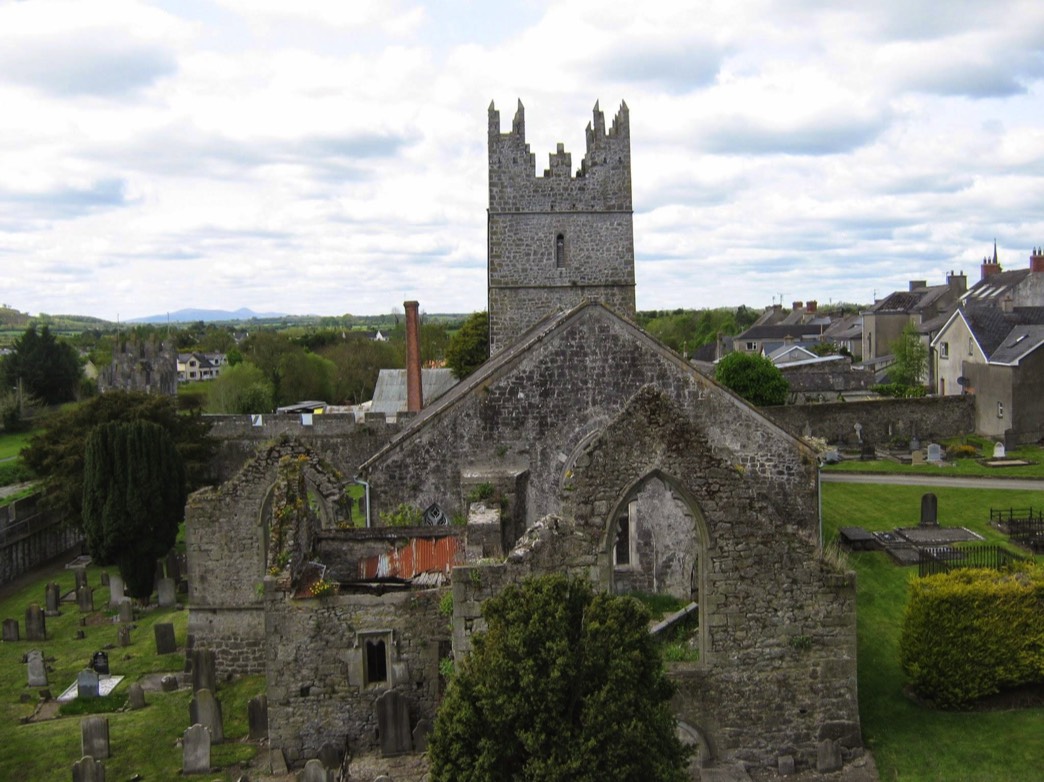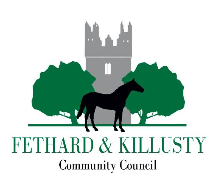Holy Trinity Church of Ireland, off Main Street, Fethard.
Service details in Clonmel Union of Parishes for Sunday 6th September 2020
8.30am - Holy Communion in Old St Mary’s, Clonmel
9.30am – Holy Communion in Holy Trinity, Fethard
11.00am – Holy Communion in St Mary’s, Clonmel
Wednesday mid-week service Holy Communion each
Wednesday at 10.30am in Old St. Mary’s, Clonmel.
Bring your travel mug with coffee or tea for social distanced chat after.
All arrangements are subject to change if guidance is updated by HSE and/or House of Bishops
Covid_19 precautions and guidelines must be followed, on Church Grounds and premises.
Sanitise Hands on arrival and departure
• Maintain Social Distancing at all times on church grounds and premises
• Face coverings advised as will be inside over 15minutes
• One family unit per pew only
• Only use pews marked for use to aid social distancing
• Remove service sheets, and any other waste and dispose of carefully at home
• No congregational Singing till advised otherwise
Weekly Sunday Service Podcasts will continue to be posted via Soundcloud to
both the Parish website and Facebook Pages
All are welcome...
Diocese of Cashel, Ferns and Ossory Church of Ireland
8.30am - Holy Communion in Old St Mary’s, Clonmel
9.30am – Holy Communion in Holy Trinity, Fethard
11.00am – Holy Communion in St Mary’s, Clonmel
Wednesday mid-week service Holy Communion each
Wednesday at 10.30am in Old St. Mary’s, Clonmel.
Bring your travel mug with coffee or tea for social distanced chat after.
All arrangements are subject to change if guidance is updated by HSE and/or House of Bishops
Covid_19 precautions and guidelines must be followed, on Church Grounds and premises.
Sanitise Hands on arrival and departure
• Maintain Social Distancing at all times on church grounds and premises
• Face coverings advised as will be inside over 15minutes
• One family unit per pew only
• Only use pews marked for use to aid social distancing
• Remove service sheets, and any other waste and dispose of carefully at home
• No congregational Singing till advised otherwise
Weekly Sunday Service Podcasts will continue to be posted via Soundcloud to
both the Parish website and Facebook Pages
All are welcome...
Diocese of Cashel, Ferns and Ossory Church of Ireland
Barbara Frydey profile on R.T.E.
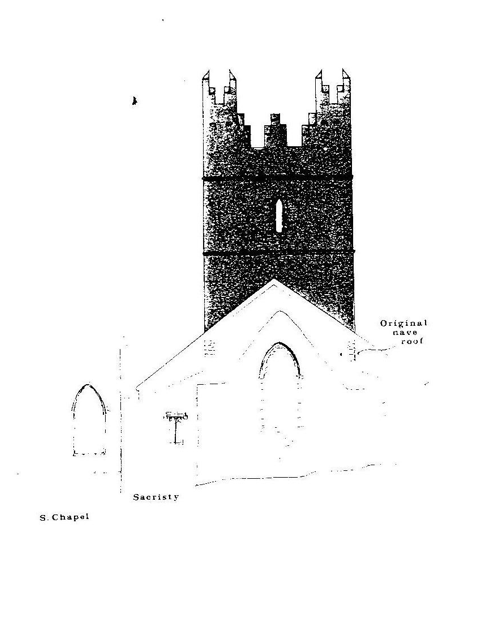

Freestanding multi-period Church of Ireland church, having four-bay medieval nave, with square-plan four-stage bell tower c. 1480 to west end, extensively renovated 1785 and aisles refenestrated 1815
This magnificent medieval parish church, formerly dedicated to St John the Baptist and now the Holy Trinity, dates to the first decade of the 13th century.
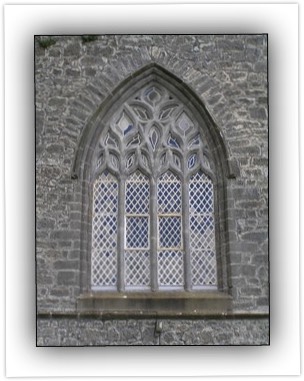
Its large belfry is of rare architectural distinction and is datable,
by the ‘flowing’ tracery of the west window, to the last quarter of the 15th century. Further works were executed in 1785 and 1815.
As the vast majority of Irish medieval churches are now roofless ruins,
Holy Trinity is a rare and precious exception.
by the ‘flowing’ tracery of the west window, to the last quarter of the 15th century. Further works were executed in 1785 and 1815.
As the vast majority of Irish medieval churches are now roofless ruins,
Holy Trinity is a rare and precious exception.

The precinct of Holy Trinity Church is a nationally important and highly interesting medieval space. The churchyard is surrounded by six high-status medieval buildings Court Castle, Edmond’s Castle,
two late medieval houses, and two almshouses. It is likely that most, if not all, of these buildings were ecclesiastical. There was formerly a third almshouse within the churchyard itself.

location on map of Fethard Town Hall
Origins of Holy Trinity Church
In 1208 William de Braose made a gift in perpetuity to the Hospital of St John the Baptist at Newgate, Dublin, of all the ecclesiastical benefices (tithes and other income) of the parish of Fethard.
Together with ‘one messuage (possibly the parish church) in my town of Fethard, with twelve acres of land and a suitable place to consecrate a cemetery.’
Newgate Hospital was endowed with substantial landholdings in County Tipperary and the valuable tithes, i.e. ten per- cent of the yearly produce, of some 20 parishes, mostly around Fethard.
Together with ‘one messuage (possibly the parish church) in my town of Fethard, with twelve acres of land and a suitable place to consecrate a cemetery.’
Newgate Hospital was endowed with substantial landholdings in County Tipperary and the valuable tithes, i.e. ten per- cent of the yearly produce, of some 20 parishes, mostly around Fethard.
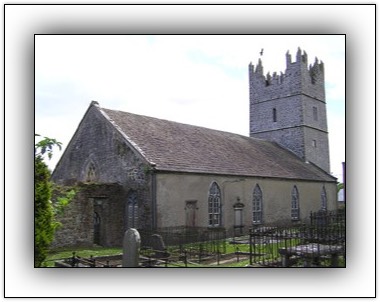
The priests administering the church were the ‘Crutched Friars’,
An obscure order of Augustinians founded in Jerusalem to provide medical services to crusaders and pilgrims.
Newgate Hospital was a ‘double house’, i.e. a male and female hospital run by canons (a monk who was also a priest) and canonesses (nuns).’
They provided the clergy in Fethard until 1305 when responsibility for pastoral care passed to the Archbishops of Cashel.
It seems likely that Newgate also operated a hospital in Fethard.
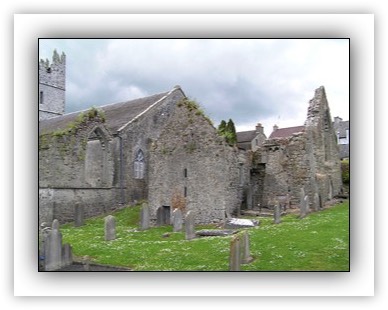
The Dissolution of the Monasteries
Newgate formally surrendered its landholdings and tithes to the Crown in February 1539.
Thomas Everard, the last prior, returned to Fethard as vicar with a pension of £15 per annum.
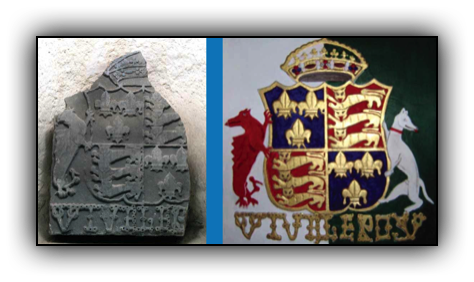
Remnant (left) and reproduction (right) of the coat of arms of Henry VIII the green and white livery of the Tudor family.
Within the church is a fragment of a coat-of-arms of Henry VIII likely to date from c.1539-41 following the Archbishop of Cashel’s (Edmund Butler) public declaration of acceptance (in Clonmel) of Henry’s claimed supremacy of the church in Ireland. However, Mass is known to have been offered here as late as 1577.
